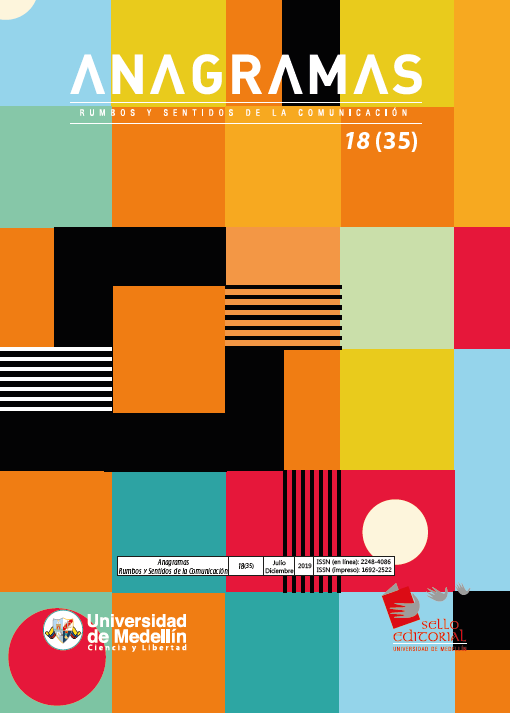Humanity’s expensive banalities. Virtual Reality mediated Advertisement exploration for raising environmental awareness: augmented advertisement
Main Article Content
Abstract
Article Details
References
Alameda, D., y Fernández, E. (2002). Aproximación conceptual a la publicidad institucional. Sphera Pública, 2, 170-185.
De Macedo, D., Rodrigues, M., Furtado, J., y Furtado, E. (2014). Using and evaluating augmented reality for mobile data visualization in real estateclassified ads. International Journal of Computers and Applications, 36(1), 7-14.
Feng, Y., y Mueller, B. (2018). The State of Augmented Reality Advertising Around The Globe: A Multi-Cultural Content Analysis. Journal of Promotion Management, 1-23.
Fontaine, G. (2004). Enfoques Conceptuales y metodológicos para una sociología de los conflictos ambientales. En: M. Cardenas y M. Rodríguez (Eds.), Guerra, sociedad y medio Ambiente. (pp. 503). Foro Nacional Ambiental.
Fundación Telefónica (2011). Realidad aumentada: una nueva lente para ver el mundo. Editorial Ariel.
Greenpeace. (2016). Which Side Are You On? United Kingdom. Recuperado de https://greenwire.greenpeace.org/uk/en-gb/blogs/which-side-are-you
Hernández Sampieri, R. (2014). Metodología de la Investigación. McGraw-Hill Interamericana de España S.L.
Hernández Sampieri, R., Fernández, C., y Baptista, P. (2014). Metodología de la investigación. McGraw-Hill.
Jiménez, S., Pohlmeyer, A., y Desmet, P. (2011). Diseño Positivo. Guía de referencia. Ediciones Uniandes.Kotler, P. (1995). Dirección de Marketing. Prentice Hall.
Marcuse, G. (2006). De la miseria humana en el medio publicitario. Melusina.
Mattelart, A. (2000). La Publicdad. Paidós.
Mugge, R., Schoormans, J., y Schifferstein, H. (2009). Emotional bonding with personalized products. Journal of Engineering Design, 20, 467-472.
Russell, J. (2003). Core Effect and the psychological construction of emotion. Psychological Review, 110, 145-172.
Sánchez, J. (1979). Introducción a la teoría de la publicidad. Tecnos.Scherer, K., Schorr, A., y Johnstone, T. (2001). Appraisal process in emotion: Theory, methods, research. Oxford University Press.
Van Dyke, M., y Tedesco, J. (2016). Understanding Green Content Strategies: An Analysis of Environmental Advertising Frames From 1990 to 2010. Routledge.
Walter, M. (2009). Conflictos ambientales, socioambientales, ecológico distributivos, de contenido ambiental... reflexionando sobre enfoques y definiciones. Boletín ECOS, (6), 2-9.
World Wide Fund (wwf) (2017). Colombia Viva. Un país megadiverso de cara al futuro.wwf Colombia.
Yaoyuneyong, G., y Foster, J. F. (2014). Factors impacting the efficacy of augmented reality virtual dressing room technology as a tool for online visual merchandising. Journal of Global Fashion Marketing, 283-296.
Yaoyuneyong, G., Foster, J., Johnson, E., y Johnson, D. (2016). Augmented Reality Marketing: Consumer Preferences and Attitudes Toward. Journal of Interactive Advertising, 16(1), 16-30.





